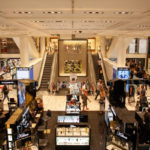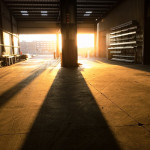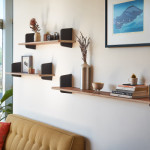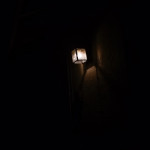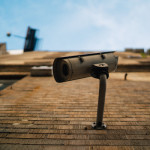Pros & Cons Of Public Security Cameras
There is much debate on whether or not surveillance cameras should be installed in public places such as airports, schools, libraries, and stores. The line between privacy and security is thin and both sides can be argued.
Although so may feel like public surveillance is an invasion of privacy, laws that prohibit surveillance in public places are few and far between, and may be limited to geographical areas. For example, in New York, police may only use video surveillance footage as part of an investigation into the alleged criminals after obtaining a warrant from local authorities.
And remember, placing cameras in areas where an individual has a reasonable expectation of privacy (ex. bathrooms, changing rooms) is always prohibited.
Let’s look at the different pros and cons of public surveillance.
Pro: Increase Public Safety
Just like surveillance on our private property improves our home security, surveillance in public areas increases public safety. Public surveillance can aid in keeping you safe when you are out and about.
Public security cameras can keep an eye out for crimes as well as act as a deterrent. For example, if suspicious individuals are seen in an area, authorities may be able to get ahead of the situation and possibly move innocent bystanders out of harm’s way.
Pro: Reduce Crime Rate
According to statistics, after security cameras are installed, crimes rates drop. For example, crime rates in Humboldt Park dropped 20% after video surveillance was implemented. As previously mentioned, the presence of security cameras act as a deterrent as criminals do not want to risk getting caught on camera.
Pro: Helps Catch Criminals
For crimes committed where video surveillance is present, the chance of catching criminals is much higher. With advanced technology like facial recognition, security cameras may be able to better identify criminals, helping authorities to track them down. Also, these images and information may be shared with the public to help spread the word. It may be difficult to obtain eyewitness accounts, but with security cameras, you often have video evidence of the events that transpired.
Pro: Provide Evidence & Gather Clues
Along the same lines, surveillance footage can be used as evidence in the courtroom. On the other hand, video footage may also help to prove a person’s innocence. Either way, recordings of public areas can help provide clues to solve crimes, and may even provide solid evidence for criminal cases.
Pro: Convenience
Convenience comes in the form of traffic cameras. Surveillance cameras at stoplights help to prevent drivers from speeding through a red light, while security cameras installed on streets and freeways can help to monitor traffic conditions in real-time.
Con: Easily Abused
Unfortunately, this helpful technology can be easily abused. For example, information collected from public cameras can potentially be used as a form of blackmail. Another example is voyeurism and stalking. To combat these issues, strict regulations on public surveillance must be put into place.
Con: Doubts About Effectiveness
In addition, many people doubt the effectiveness of public surveillance. While statistics may show that crimes and incident rates have decreased, security cameras are not as effective when it comes to horrific acts such as terrorism.
Con: Expensive
The cost of public security cameras is another issue. Since many doubt the effectiveness, they feel that public surveillance systems are a waste of money. They argue that high maintenance and costs of these systems is not justified by their limited results.
As you can see, both sides have valid arguments. It is a matter of whether the pros outweigh the cons or vice versa. For the most part, public surveillance has been working for our benefit. Feel free to share your thoughts on the matter with us and your peers on Facebook, Twitter, LinkedIn, and Pinterest.
Please call us at 888-203-6294 if you have any questions regarding our security cameras or installation services, or to request a free quote! You can also visit us online at SecurityCamExpert.com, where you’ll find more information about our products and service. We are happy to help you protect yourself and your loved ones.
Improve Your Business Surveillance System
Video surveillance is a great asset for businesses, keeping properties, inventory, and employees safe. Should anything happen, security cameras provide video footage and evidence to help capture suspects. And while your surveillance systems are meant to secure your business, you must also protect and maintain your system to ensure optimal performance. Here are some smart business surveillance tips.
Secure Your Surveillance System From Hackers
Many business surveillance systems utilize IP security cameras, which require Internet connection to allow you to view your feed remotely. Unfortunately, this makes IP surveillance systems susceptible to hackers. Thankfully, there are ways to keep them at bay:
- Change your system password every three months and practice proper password management.
- Never keep default usernames and passwords. These can easily be found online, thus, leaving them in place gives hackers free admission to your system.
- Secure your business network – an unsecure network risks leaving open access points in your system, giving hackers the opportunity to access your surveillance cameras.
- Never connect your cameras to a public network. Hackers can easily access information (like video credentials) through shared networks.
- Choose cameras with encrypted signals – encryption disguises information sent over the internet, making it challenging for hackers to identify valuable data.
Avoid Video Surveillance Legal Liabilities
As long as you inform employees and customers that they are being recorded, as well as refrain from monitoring areas with a reasonable expectation of privacy, your security system should be free from legal liabilities. Here are the areas where people have a reasonable expectation of privacy:
- Bathrooms
- Dressing rooms
- Exam rooms
- Locker rooms
- Hotel rooms
Remember, the laws vary from state to state. Be sure you fully understand the laws regarding video surveillance, do not invade customer and employee privacy, and review the camera privacy laws in your state.
Strategically Place Cameras
Security cameras locations are crucial for complying with laws, as well as the effectiveness of your system. Be sure your camera locations meet these requirements:
- Install cameras in sensible areas, such as offices, stockrooms, behind cash registers, above entrances and exits.
- Place security cameras under sufficient lighting to provide clear quality images.
- Position cameras to capture wide angles for fuller surveillance coverage.
Store Video Footage In The Cloud
Cloud storage solutions offer excellent benefits and are a great alternative to traditional analog systems. You may consider employing cloud solutions as they are:
- Cost-effective – Cloud storage eliminates the need for onsite digital video recorders (DVR) or network video recorders (NVR).
- Accessible – When your data is stored in the cloud, it can be viewed remotely via smartphone, tablet, or desktop web browser any time.
- Flexible – New users, locations, and cameras can be easily added to your existing infrastructure without rewiring.
Increase Business Security With Additional Camera Features
Additional features can help to enhance your surveillance system overall. Some additional benefits include:
- Adjustable Angles – PTZ cameras can pan, tilt and zoom and cameras that are mobile allow for multiple views.
- Artificial Intelligence (AI) Technology – Security cameras hosted on monitoring platforms powered by AI alert users about important or unusual events.
- Day/Night Capabilities -Night vision cameras utilize infrared LEDs and are helpful for those who need around the clock surveillance.
- High Resolution – These cameras provide the best quality images.
- IP-based vs. Wired – No video cables are required for IP systems.
- Weatherproof – Weatherproof cameras and housing are built to withstand outdoor conditions to extend performance.
- Remote Access – With the mobile app, you can use your smartphone to view footage and remotely control your system.
We offer a wide variety of affordable security cameras and surveillance systems – browse our stock online at SecurityCamExpert.com or call 888-203-6294 to speak with one of our experts. You may also connect with us on Facebook, Twitter, LinkedIn, and Pinterest.
Workplace Surveillance
Some may argue that video surveillance in the workplace can be an invasion of privacy. However, as long as employee privacy is respected and existing surveillance laws are abided by, it can actually benefit both the employer and employees. Aside from decreasing misconduct and increasing safety, workplace surveillance has its advantages.
- Reduce Risk Of Employee Theft & Fraud
Employee theft, also known as “shrinkage,” is a growing problem for businesses. It is a bigger threat than identity theft and cyber fraud according to the FBI. In addition, fraud by employees is still a major issue, mainly for businesses in the financial and retail sector.
Video surveillance systems work to combat these issues, providing a way to keep a watchful eye over employees while producing video evidence when necessary.
- Improve Operations & Productivity
Businesses thrive on success and profits, therefore, anything that can increase productivity and improve operations is good thing. Installing security cameras in the workplace influences employees to stay on task, thus, plays a role in productivity and efficiency.
- Ward Off Illegal Visitors
Security cameras not only safeguard the business, but work to keep employees safe and protected. An effective surveillance system will help deter intruders and provide video evidence should a break-in or other incident occur. Security cameras can also monitor the different visitors your business has throughout the day.
- Enhance Safety
Workplace safety is expected and non-negotiable. All employees should feel safe in the workplace and security cameras can enhance that feeling. When safety measures are blatantly disregarded, management can review these instances and deal with them accordingly to prevent any unnecessary accidents in the future.
Share your own thoughts on workplace surveillance with us on Facebook, Twitter, LinkedIn, and Pinterest.
Whether you’re looking for a surveillance system for your home or business, let us help you! Visit SecurityCamExpert.com or call us at 888-203-6294 for more information or to request a FREE quote!
Investing In Business Surveillance
Installing video surveillance for your business may be a significant investment, but it can also provide numerous benefits. Although concerns about privacy and costs may prevent businesses from seeing their true value, many will find that business surveillance not only protects the owners, but also the employees and customers alike. Overall, a business surveillance system can prove to be a valuable asset for businesses. Here are just some of the reasons why.
- Deter Thefts
While video surveillance may seem to be targeted toward outside threats, it can very well prevent insider thefts. Unfortunately, employee theft is a serious and common occurrence for many businesses. Security cameras can help to monitor employees, account for anything that goes missing, and deter employees from misconduct. - Increase Profits
Analyzing video can help businesses learn how to improve their strategy and increase productivity. Managers may supervise employees remotely, allowing them to determine which employees are helping or hurting the business overall (for example, too much conversation or inappropriate internet habits). Reviewing footage also helps businesses see which times of day are over or understaffed, enabling them to adjust shifts accordingly to maximize profits.In addition, businesses with video surveillance systems may be eligible for savings on insurance. The potential savings for having a security system installed may be significant and should be taken into account when determining whether or not to invest in surveillance.
- Workplace Incidents
Frivolous lawsuits are more common than we would like to admit. Luckily, video surveillance can help to protect your business in these instances. Surveillance footage may be used as evidence for legal purposes. And as mentioned previously, the presence of security cameras can deter harassment, violence, and other misconduct from employees, customers, or other outsiders.
Does your business have a surveillance system? What other advantages can business surveillance provide? Share your thoughts with us on Facebook, Google+, Twitter, LinkedIn, and Pinterest.
If you need help choosing the right security camera system for your business or home, please feel free to contact us at 888-203-6294 or visit SecurityCamExpert.com to browse our selection.
Commercial Surveillance Camera Placement
For commercial businesses, video surveillance not only keeps customers, employees and properties safe, but it can also prevent incidents and potentially catch the perpetrator if a crime occurs. Should you decide to install a video surveillance system at your business, choosing the right locations is crucial. You want to avoid leaving blind spots as that will compromise your security, making your investment virtually useless.
For a better idea of where you should place your security cameras, here are the best locations for commercial properties.
Entrances & Exits
From the front/main entrance to side or back doors, you want to monitor any and all areas in which individuals can gain access to your building. This allows you to track who enters and exits, and whether or not they have authorized access.
You want to aim your indoor cameras toward the inside rather than at the door. The lighting conditions may change drastically when the door opens and closes, thus compromising the quality of your video.
For increased security, you may want to consider installing monitors that display a live feed on the screen at the entrance of your business to let visitors know they are under surveillance.
Restricted Access Areas
Doors that require a key card or an entrance code should be monitored. This provides an audit of who comes and goes, and who may have tried to gain unauthorized access.
Asset Storage
Whether it’s a warehouse full of merchandise or a server room filled with priceless equipment, you want to position a few cameras (the number will depend on the size and layout) to keep an eye on the area(s) where you store your assets.
By installing surveillance cameras in places where you store resources, documents, or even office supplies may potentially reveal cases of employee theft that may otherwise go unnoticed.
Monetary Transactions
It should go without saying that any point at which money regularly changes hands should be under surveillance. For example, security cameras should oversee cash registers at retail locations, teller stations at banks, and other transaction points on the property.
And you want to mount cameras low enough to see faces. You may even consider mounting a small camera at counter level in case of hats or hooded garments that may obstruct the view of a person’s face.
Work Areas
Whether or not you deal with customers at your location, it is still beneficial to keep an eye on employees. This usually discourages any slacking off or misbehavior. Just remember, you must disclose that there are security cameras and that they are under surveillance.
Loading Docks
Loading docks are prime targets since shipments are delivered and/or sent out from there. You want to have surveillance cameras watching over these areas to protect your employees and assets.
These cameras can also help with false worker’s compensation claims related to injuries sustained while loading or unloading equipment. Installing flood lights in this area also helps to produce clearer footage.
Secluded Outdoor Areas
These include parking lots, alleyways and dumpster pads – all of which are prime locations for shady activity. Security cameras installed in these areas should deliver a live feed to the security office so that a guard may watch for suspicious activity.
Along with surveillance locations, quality equipment suited for your security needs is vital for a successful surveillance system. Let us help you find the right security cameras and equipment for you – visit SecurityCamExpert.com or call 888-203-6294 today! You may also connect with us on Facebook, Google+, Twitter, LinkedIn, and Pinterest.
Important Night Vision Camera Features
Night vision security cameras are very helpful in providing around-the-clock surveillance for homes and businesses. Their ability to see in the dark is thanks to advanced IR (infrared) surveillance technology. However, when shopping for a night vision camera, simple wording such as “infrared (IR) illumination” and “night vision” is not enough. You want to look for specific features to ensure you are choosing the best night vision security cameras.
Three important features to look for include:
- IR cut filter
- Powerful Illumination
- Infrared Illuminators (ideally, these match the FOV (field of view) of the camera’s lens)
The quality of your night vision security camera will be determined by these features.
IR Cut Filter
Night vision security cameras with infrared cut-off filters improve image clarity (especially in daytime) and can prevent out of focus images. The way the filter works is quite simple, yet makes all the different in video and image quality.
The IR cut filter is physically moved over the lens when daylight (white light) is detected to block out the IR light (that would affect the image quality). When the light levels drop to the point where night vision is necessary, the camera will move the lens out of the way. This “filter switch” allows the camera to pick up the same colors as the human eye to record natural looking images and results in better images overall. Without these filters, there’s no way to prevent full-spectrum light, thus, daytime images would suffer from distortion and possible loss of focus.
Powerful Illumination (IR LEDs) Beam
Simply put – the more powerful the illumination, the better the night vision will be. For example, if you are looking for outdoor cameras, you want cameras that produce something in the neighborhood of 100 ft. of IR illumination.
Infrared Illuminators
Before discussing IR illuminators, the Field of View (FOV) should be understood. If you think of it in terms of binoculars, the field of view is everything you see when looking into them. What you cannot see is outside of the field of view. Often times, the infrared illuminators in a night vision security camera don’t match its FOV, thus the IR-beam is not illuminating the total area captured by the lens.
For the night vision cameras with an IR illuminator narrower than the FOV, you get a bright area in the middle of the image with the darkness growing as you get further from the center (ex. the spotlight effect). This is problematic as it makes it nearly impossible to identify areas outside of the center of the image. Finding a night vision camera with an IR illuminator that is equal to the FOV may cost more, but is well worth it.
Although seeking out specifications and ensuring that night vision cameras meet your expectations and requirements seems like a tedious task, it is well worth the security and peace of mind when it comes down to it.
Need help choosing a night vision security camera? Contact us at 888-203-6294 to discuss your options. You may also browse our stock of IR night vision cameras and other surveillance equipment online at SecurityCamExpert.com. For the latest updates, connect with us on Facebook, Google+, Twitter, LinkedIn, and Pinterest.
Security Camera Image Sensors: CCD Vs. CMOS
Choosing the best security camera system can be based on many factors. When it comes to the individual security cameras, the quality of images and video captured is largely dependent on the image sensor.
The image sensor (also known as the “eye”) determines the imaging capability and performance of your security camera. Their duty is to convert an optical image into an electrical signal, and is either a charge-coupled device (CCD) or a complementary metal-oxide semiconductor (CMOS) active pixel sensor.
To better understand which type of image sensor will work best for your security camera needs, we will take a look at the differences between CCD and CMOS.
What Is A CCD Image Sensor?
CCD’s receive light and convert it to electrons, then carry the electrons to a specific area across the chip to be processed. The conversion of analog light signals into digital pixels takes place in the chip without distortion. The special manufacturing process of CCD’s produces high-quality sensors in terms of fidelity and light sensitivity.
What Is A CMOS Image Sensor?
The CMOS sensor came from the MOS active pixel image sensor which emerged in the 1960s. Since then, its design and function has greatly improved, containing integrated circuitry and arrays of pixel sensors. Unlike the CCD, CMOS sensors process the elections at the same place that it receives the light, thus making it faster and smaller. The CMOS is able to do so because it has multiple transistors at each pixel, offering flexibility because each pixel is treated individually.
CCD vs. CMOS
Now that we have covered the basics, we can compare the strengths and weaknesses of CCD and CMOS cameras.
- CCD cameras provide high-quality images with low noise (grain), whereas CMOS cameras are more susceptible to noise. CMOS cameras often need more light to create a low noise image at proper exposure.
- CCD cameras possess better light sensitivity than CMOS cameras, since the CMOS sensors have more transistors next to each pixel, which may interfere with the amount of light that reaches the photodiode (where the picture is processed).
- CMOS sensors consume less power since the processes are confined to a smaller area. CCD sensors consume as much as 100 times more than CMOS.
- CMOS chips require a simple and traditional manufacturing process (same as creating microchips) making them easier to produce and much more affordable than CCD. As mentioned, CCD sensors require a special manufacturing process which makes them more expensive.
Common Applications
In these common applications, one camera outshines the other.
- Because of their superior light sensitivity and large effective imaging area, CCD cameras are better suited for low light conditions than CMOS cameras.
- Since the CMOS image sensor is compact, CMOS cameras are better for hidden or covert surveillance.
- Choose CMOS cameras for high-frame speed video shooting since the CMOS image sensor has a very fast processing speed (thanks to its ability to directly convert photoelectric signal to digital signal).
Which type of security cameras do you prefer? Share with us on Facebook, Google+, Twitter, LinkedIn, and Pinterest.
To shop our stock of security cameras and surveillance equipment, including CMOS cameras and CCD cameras, visit SecurityCamExpert.com. If you are located in Southern California and would like to schedule a site survey or request a free quote, please call 888-203-6294.
Low-Light Security Cameras
There’s something to be said about low-light security cameras. Because lighting conditions in different environments are not always ideal for surveillance, low-light security cameras enable us to capture respectable footage in these situations. And with new technology, the quality of low-light camera images has vastly improved.
But before you invest in low-light security cameras for your home or business, here are some important facts and tips to know to make the most of your security systems.
Here’s some important information in order to make the most of your security systems.
First and foremost, you should know the related terms you may come across:
- Low-Light
- Day/Night
- Starlight
- SenseUp
- Night Vision
- Light Finder
- Light Toucher
- Dark Finder
- Light Catcher
- Thermal Imaging
All of these terms refer to the same classification of surveillance cameras. And while some of these terms are trademarked by manufacturers, the most commonly used terms for these cameras are “low-light” and “day/night.”
How It Works
Despite the sometimes confusing terminology, the basic components remain the same for all low-light cameras: a lens and sensor and some level of image processing. And to be clear, low-light cameras are different than thermal cameras (which track heat rather than motion or images) or cameras with IR illuminators.
A majority of low-light cameras use an IR cut filter, which is a mechanical filter that sits between the lens and the sensor (CMOS chip). The name is derived from its ability to “cut out” or filter out IR illumination during the day to improve color quality. At night, as available light diminishes, it slides out of the way to allow more light to get the sensor, thus improving low-light video quality. In order to help the video quality, it is also captured in black and white. In most cameras the filter is mechanically driven by an algorithm, however, some cameras allow manual control.
Optics
Because nearly all the cameras contain IR cut filters, it comes down to the lens and the processing to set these items apart from one another. The lens transmits light to the sensor and then the data on the sensor is processed by a processor. The variance among cameras is often in the optics. You want to be sure that both the lens and the sensor are of great quality, otherwise the potential for stellar images will be wasted.
Processing
Aside from the optics, processing is an important factor in determining the best low-light camera for you. Most manufacturers employ the same OEM processor yet make their own adjustments to them. The ability to control the tuning of an image is crucial as the tuning of an image during daylight will likely not hold up at night or in complete darkness.
Pay close attention to image toning, noise suppression, and the ability to maintain color and contrast in low light as these often differentiate one camera from another.
Lux
Typical IR cameras will capture images between 1 lux and 0.1 lux, however, the latest technologies can allow .01 lux to 0.00001 lux. This means that what would have been a completely black image a few years ago now looks like a near-daytime picture thanks to new low- and ultralow-light sensors.
While this achievement is impressive, in reality, there will rarely be any situations where there is complete darkness. Some ambient light will likely be present, whether it is from street lamps, the moon, or even the stars.
Spec Sheets Vs. Live Demo
As discussed, the impressive low-light sensitivity and lux will likely be included in the spec sheets, along with other important features. However, these spec sheets often represent technical specifications as opposed to actual performance.
Instead of simply relying on spec sheets, try to find a manufacturer or company that will provide you with a live demo and comparisons. This will give you a better idea of the low-light camera’s performance and whether or not it lives up to your requirements. In addition, third party reviews can give you more insight as well.
Resolution
Just because a camera boasts a high megapixel count does not necessarily mean it will produce a better low-light image. With higher resolution and higher megapixels, each pixel becomes a smaller percentage of that sensor. For example, image the sensor has a fixed size, yet the resolution is doubled. The pixels are smaller, thus, the sensor for each pixel is also smaller, increasing the amount of sensitivity needed to maintain the same level of quality.
Lens Speed
The speed of the lens is important and investing in a fast lens and better optics is crucial. The lens determines what information reaches the sensor, and, because of this, you get what you pay for when it comes to lenses and optics.
Positioning & Distance
Proper positioning of your security cameras is critical. Focus on what you want to capture and the level of detail you need when choosing the location of your cameras.
Position surveillance cameras so that the common range of motion is moving across the field of view rather than having common movement coming toward the camera. Also, avoid bright light pointing directly at the lens – this can cause flare or “fog” on the image.
Consider the field of view in terms of distance. The level of detail from the camera is highly dictated by how close the camera is and how much it’s zoomed in.
And when it comes to distance, you want the right combination of lens and camera that factors in the distance from the area you are trying to monitor. If you need to detect motion from long distances, your best bet would be to switch to thermal cameras. Activity will be detected, however, it will be harder to determine whether it is a person or an animal.
Share your own knowledge of low-light surveillance cameras with us and your peers on Facebook, Google+, Twitter, LinkedIn, and Pinterest. To shop our selection of quality CCTV surveillance systems and security cameras, please visit SecurityCamExpert.com or call 888-203-6294 today!
CCTV Home Security Camera Systems
For the best home or business security, it’s important to choose the right CCTV security cameras. With the wide selection of security cameras to choose from, the task can seem daunting. To help ease some of the stress, here are a few things you should focus on when shopping for the perfect CCTV security system.
- Cheap ≠ Cost-Effective
You always want to invest in good quality, but sometimes the ideal option falls a little bit out of your price range. That doesn’t mean you should just go the cheap route as this can end up costing you more in the long run. Remember, more often than not, you get what you pay for. Look for reputable security companies that offer a range of options from solid brand names (ex. Hikvision, Dahua, Axis) and pay attention to warranty offerings (reputable brands usually offer up to 3 years).
- What Do You Need To Record?
Consider what you need to record in order to narrow down which specific camera functions you require. From fixed position to a range of angles, and up to 360-degree range, there’s a security camera for that. Also consider the location of your camera and the environment as there are a variety of cameras that can accommodate as well.
- Lenses Explained
Don’t understand the lens size of wide angle degree for CCTV cameras? We’ve got you covered. The rule of thumb is that for each millimeter of lens size that is how far away in meters the camera will be able to view its subject (focal length). The degree of the wide angle lens will determine the field of vision and shorten the focal length as the angle gets wider.
For example, let’s say you have a camera with 60-degree wide angle, 4mm lens. This camera will be able to effectively identify a human target at up to 4 meters, but will not have enough range to view a neighbor’s property to the left or right.
- Storage & Data
When it comes to storage and data, it will depend on the security camera and how long you will need to store your footage. IP cameras can connect to your network and enable real-time notifications as well as send data to your provider’s control center.
HD security cameras require better bandwidth and internet connection and may consume lots of data when accessed via mobile devices. They also require higher levels of storage to maintain their high resolution and quality.
- Analog Vs. HD Vs. IP?
The quality of images you need from your security cameras will often determine the type you choose. Analog cameras offer low-resolution images, and thus, decreased storage demands. HD cameras can record higher resolution images and are suitable for identifying numbers and characters. They also retain quality when digitally zoomed in. While basic analog cameras may be more affordable, if you’re looking for higher quality footage, you may want to opt for high definition or IP cameras instead.
- Positioning
If you have the best security cameras in poor locations and positions, what good are they really? Think about your property overall and begin by covering the perimeter. By securing the perimeter, you can get an early warning of any suspicious activity, allowing you to act accordingly and in a timely fashion. Also, having your security cameras in plain view but out of reach can be an effective deterrent.
- Lighting Situations
Typically, CCTV surveillance cameras can record color during the day and revert to black and white recording at night. You can supplement your day and night cameras with motion sensor lights, which will allow for sufficient lighting for better images when motion is detected. Low light cameras are another option and may not need supplemental lighting.
- Consider All Costs
When shopping for a CCTV system, you are not just buying cameras. Keep in mind the cost of other necessary items such as recorders, cables, connectors, an uninterrupted power supply, as well as the cost of labor, installation, and possible service provider fees.
- Advice From Security Professionals
Seeking advice from a security professional will give you better insight as they can assess your property and provide the best solutions to suit your needs. Here at SecurityCamExpert, we can provide site surveys and free quotes, along with quality equipment and professional installation. Feel free to contact us 888-203-6294.
You can browse our selection of quality CCTV surveillance cameras and equipment online at SecurityCamExpert.com. Connect with us on Facebook, Google+, Twitter, LinkedIn, and Pinterest!
